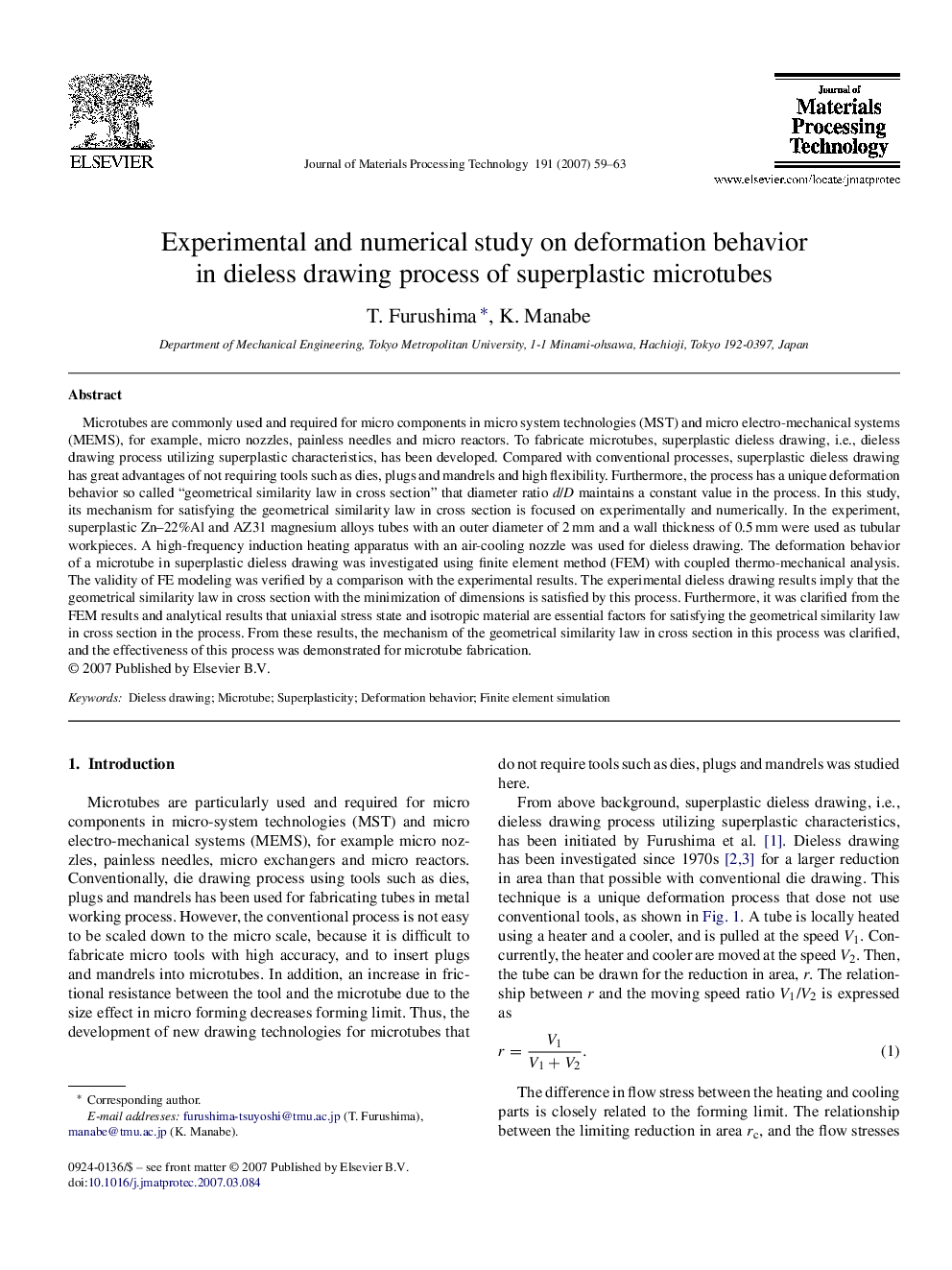| کد مقاله | کد نشریه | سال انتشار | مقاله انگلیسی | نسخه تمام متن |
|---|---|---|---|---|
| 793909 | 1466774 | 2007 | 5 صفحه PDF | دانلود رایگان |

Microtubes are commonly used and required for micro components in micro system technologies (MST) and micro electro-mechanical systems (MEMS), for example, micro nozzles, painless needles and micro reactors. To fabricate microtubes, superplastic dieless drawing, i.e., dieless drawing process utilizing superplastic characteristics, has been developed. Compared with conventional processes, superplastic dieless drawing has great advantages of not requiring tools such as dies, plugs and mandrels and high flexibility. Furthermore, the process has a unique deformation behavior so called “geometrical similarity law in cross section” that diameter ratio d/D maintains a constant value in the process. In this study, its mechanism for satisfying the geometrical similarity law in cross section is focused on experimentally and numerically. In the experiment, superplastic Zn–22%Al and AZ31 magnesium alloys tubes with an outer diameter of 2 mm and a wall thickness of 0.5 mm were used as tubular workpieces. A high-frequency induction heating apparatus with an air-cooling nozzle was used for dieless drawing. The deformation behavior of a microtube in superplastic dieless drawing was investigated using finite element method (FEM) with coupled thermo-mechanical analysis. The validity of FE modeling was verified by a comparison with the experimental results. The experimental dieless drawing results imply that the geometrical similarity law in cross section with the minimization of dimensions is satisfied by this process. Furthermore, it was clarified from the FEM results and analytical results that uniaxial stress state and isotropic material are essential factors for satisfying the geometrical similarity law in cross section in the process. From these results, the mechanism of the geometrical similarity law in cross section in this process was clarified, and the effectiveness of this process was demonstrated for microtube fabrication.
Journal: Journal of Materials Processing Technology - Volume 191, Issues 1–3, 1 August 2007, Pages 59–63